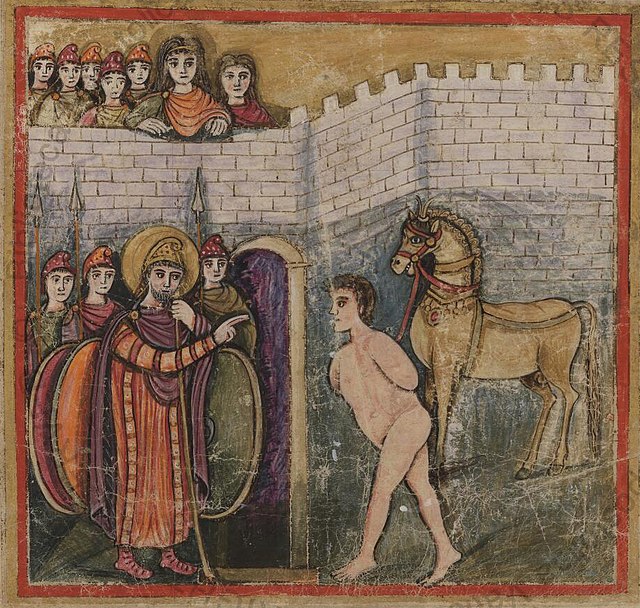In Greek mythology, Sinon or Sinopos was a Greek warrior during the Trojan War.
Sinon as a captive in front of the walls of Troy, in the Vergilius Romanus, 5th century AD
Engraving after frescos by the Carracci, 1663
Etching by Jean Mignon, after 1535
Engraving, Giorgio Ghisi after Giovanni Battista Scultori, Sinon Deceiving the Trojans, c. 1545
The Aeneid is a Latin epic poem that tells the legendary story of Aeneas, a Trojan who fled the fall of Troy and travelled to Italy, where he became the ancestor of the Romans. Written by the Roman poet Virgil between 29 and 19 BC, the Aeneid comprises 9,896 lines in dactylic hexameter. The first six of the poem's twelve books tell the story of Aeneas' wanderings from Troy to Italy, and the poem's second half tells of the Trojans' ultimately victorious war upon the Latins, under whose name Aeneas and his Trojan followers are destined to be subsumed.
Manuscript circa 1470, Cristoforo Majorana
Aeneas Flees Burning Troy, by Federico Barocci (1598). Galleria Borghese, Rome, Italy
Paul Cézanne, Aeneas Meeting Dido at Carthage, c. 1875, Princeton University Art Museum
Hawara Papyrus 24, with a line of Virgil's Aeneid (repeated 7 times; probably a writing exercise). Book 2, line 601 ( "It is not the hated face of Spartan Helen..."). Recto. Latin language. 1st century AD. From Hawara, Egypt. On display at the British Museum in London








